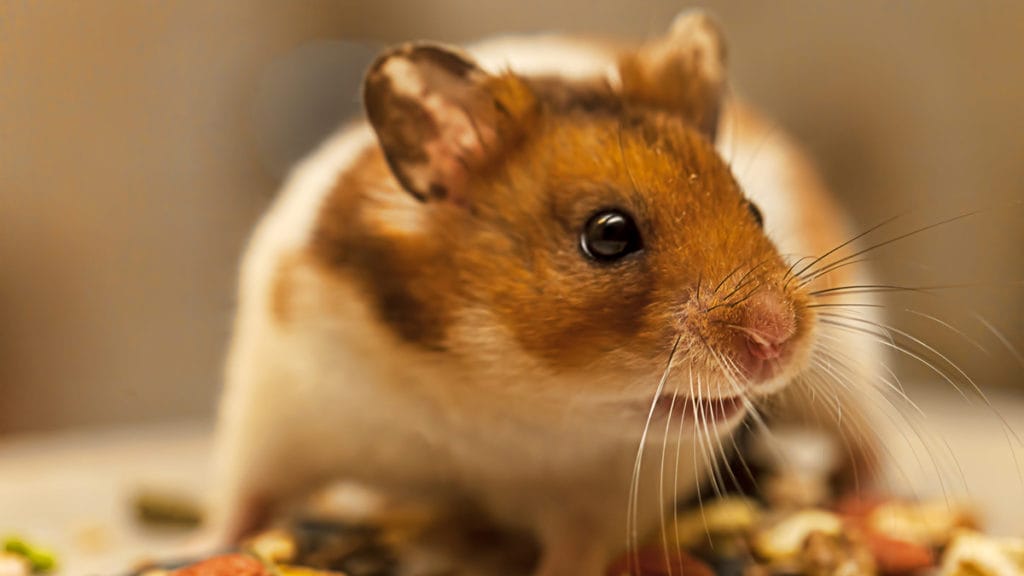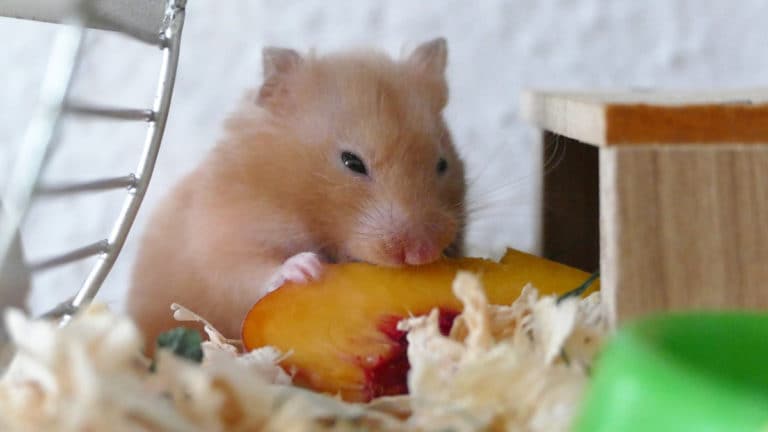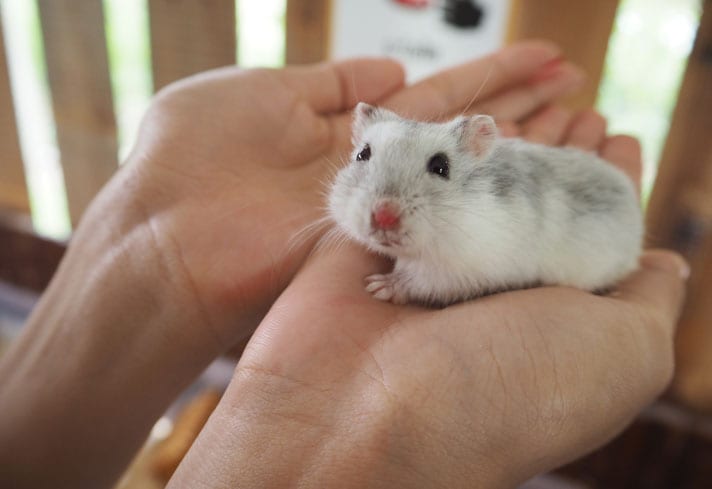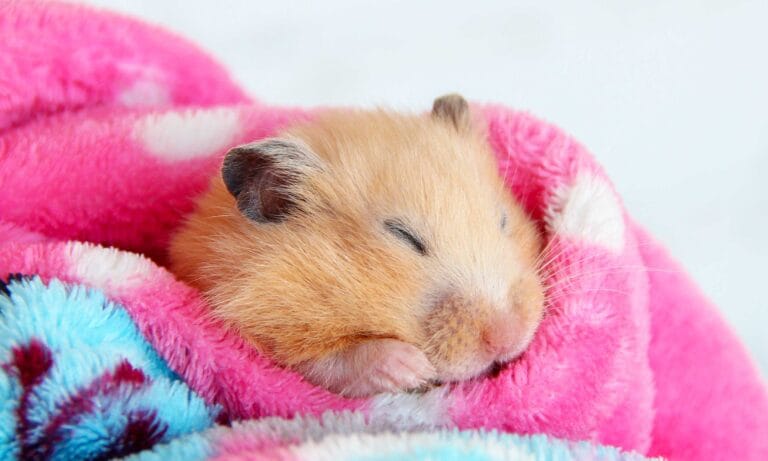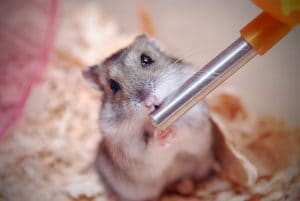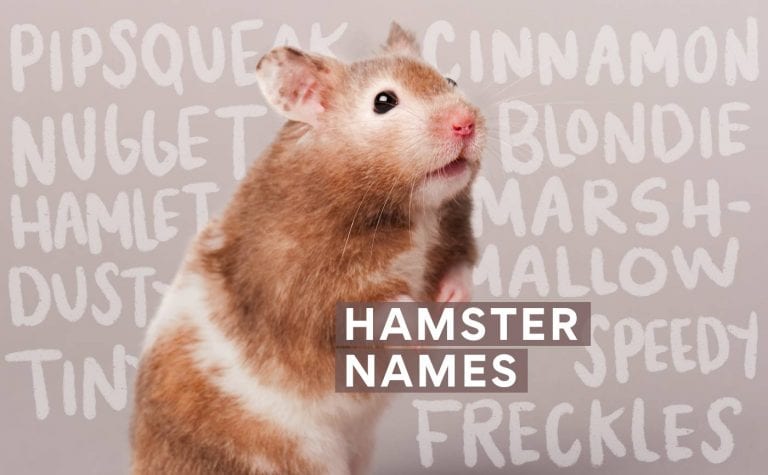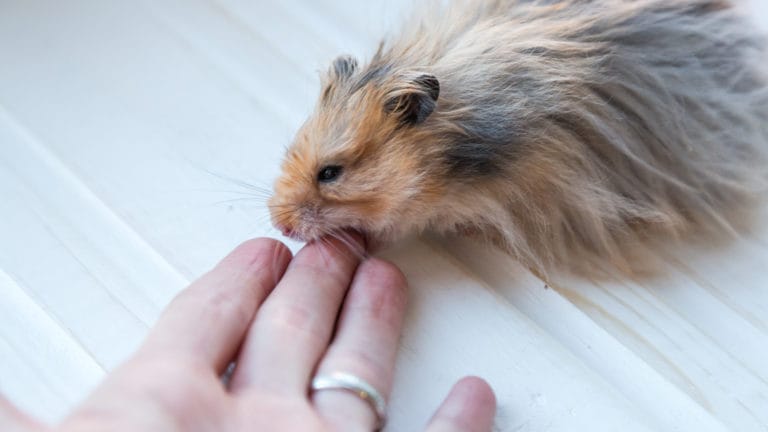Hamsters will stuff their cheeks with just about anything, but they need a balanced diet to thrive. As omnivores, they eat a variety of foods, from seeds, fruits and greens to the occasional insect or other form of protein.
A variety of commercial hamster food is available for hamsters, from pellets, seed mixes and blocks. But which is the best to keep your small animal healthy and thriving?
What Should I Feed My Hamster?
“Out in the wild, hamsters eat a variety of seeds and plants,” says Kristin Valdes, DVM, an exotic vet at Chicago Exotics Animal Hospital in Skokie, Ill. “A pet hamster should ideally have a block or pelleted diet specifically for hamsters.”
First choice, according to Dr. Valdes, is a lab block or pelleted hamster diet. Many companies offer quality pelleted and lab block diets that contain all the nutrients your hamster needs. An added benefit of blocks is that they meet the hamster’s desire to chew and help keep his teeth trimmed.
While hamsters might prefer seed mixes, Dr. Valdes says these are best offered “as a small treat because they will choose the less healthy seeds first, then so on until the healthiest food is chosen last.”
Also, hamsters are prone to obesity. Therefore, seed mixes with ingredients that are dense in fat and calories, such as those with high amounts of sunflower seeds, can cause obesity or nutritional deficiencies, so you’ll want to avoid them.
When feeding a commercial block or pelleted hamster diet, Dr. Valdes says to follow the company’s recommendation on how much product to feed. This, too, will help prevent your pet from gaining excess weight and consume the nutrients he needs.
Can I Add Fresh Food to My Hamster Diet?
Yes. For a truly complete hamster diet, Dr. Valdes says to offer your hamster small amounts of greens and fresh veggies, as well as a piece of lean boiled meat, but only as a snack.
“Here are some things you can try to offer in small amounts as a treat,” she says.
- Asparagus
- Baked or Steamed Chicken, Turkey or Cod Fish (Skin and bones removed.)
- Bananas
- Bean Sprouts
- Boiled or Scrambled Eggs
- Blackberries
- Blueberries
- Bran and Wheat Germ
- Cantaloupe
- Cauliflower
- Chestnuts
- Clover
- Cooked Brown Rice (plain)
- Cooked Ground Beef (Rinse it well in hot water to remove any grease.)
- Cooked Whole Grain Pasta
- Dandelion Leaves
- Dog Biscuits (Make sure they do not contain garlic, onion or onion powder.)
- Endive
- Flax Seed
- Lentils
- Mango
- Melon
- Mild Cheeses
- Nutritional Yeast
- Oatmeal
- Parsnips
- Plain Tofu
- Raspberries
- Romaine Lettuce
- Seedless Apples
- Seedless Grapes
- Squash
- Strawberries
- Sweet Potatoes
- Swiss Chard
- Turnips
- Unsalted Popcorn (no butter)
- Unsalted Pumpkin Seeds
- Unsalted Soybeans
- Water Chestnuts
- Water Cress
“Good treats for a hamster are things like fresh veggies and a sparing amount of fruit or whole grains,” Dr. Valdes says. “Fruit and whole grains can upset the GI tract if offered in too high levels. As a rule of thumb, only 5-10 percent of the diet should be treats.”
What Foods or Ingredients Should Be Avoided?
Some fresh, human foods are unhealthy for hamsters, and others are downright toxic. According to Dr. Valdes, avoid the following fresh and prepared items in your hamster diet.
- Almonds (cyanic acid)
- Avocado (cardiac glycosides)
- Canned food (risk of botulism)
- Chocolate (cardiotoxic risks)
- Candies (too high in sugar)
- Chips and Junk Food (too high in excessive fat)
- Chives (allium family; toxic to blood cells)
- Citrus Fruits (e.g. oranges, kiwis, lemons, limes, pineapples, tangerines)
- Garlic (allium family; toxic to blood cells)
- Leeks (allium family; toxic to blood cells)
- Onions (allium family; toxic to blood cells)
- Pickles
- Pork Products
- Eggplant
- Jams and Jellies (too high in sugar)
- Raw Kidney Beans
- Raw Potatoes
- Raw Rhubarb (toxic)
- Tomato
- Watermelon (causes diarrhea)
- Scallions (allium family; toxic to blood cells)
- Spices (e.g. cayenne, chili)
How Should I Feed My Hamster?
“Evening time seems to be preferred by hamsters as their feeding time,” Dr. Valdes says. “That is the time when, in the wild, they wake up to forage for food.”
She recommends feed your hamster once daily. Place the food dish in an area away from where your hamster sleeps and eliminates. Keep the food dish clean, and throw away any leftover snacks hidden in your tiny pet’s burrow or left in his bowl each day. Hamsters like to cache food to snack on later, so check inside hidey-holes and underneath bedding.
Remember fresh, clean water! Whether you use a bottle or a bowl, change the water out daily.
“If you use a water bowl, you will likely need to fill and change the water multiple times a day as hamsters will often fill the bowl with the bedding,” Dr. Valdes says. “You will also need to spot clean the bedding around the bowl to prevent damp bedding from sitting in the cage too long.”
Share:
